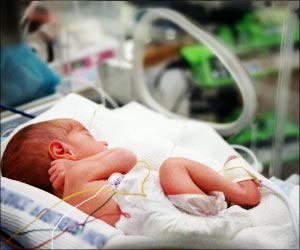Using the example of the red flour beetle, the biologists are presenting a new model system for the exploration of the dynamic development of animal tissues.

‘Amnion was observed to start the rupture of the red flour beetle embryo's protective sac, while the serosa drives the process of the sac being peeled back.’





The epithelial tissue of the sac in the red flour beetle consists of two layers of tissue, the inner amnion and the outer serosa. However, in the past it was difficult to study what happens to the amnion as the insect embryo develops because it is hard to distinguish it from the serosa. Now, the research team has used genetically engineered red flour beetles in which the cells of the amnion produce a fluorescent protein that can be viewed under a microscope. This allowed the amnion to be observed in living specimens during beetle embryo development. With their observations, the researchers were able to disprove a model of the structure of these tissues that was developed eleven years ago. The biologists were now able to show that the two layers are discrete, but converge at various points in the animal's development. The results of the study are reported in eLife.
The interaction between the two tissue layers during the rupturing of the sac is particularly important for the insect's further development. Observing this process was made possible with a light sheet fluorescence microscope. The microscope's high resolution and speed allows the researchers to observe the breaking of the sac. "The small opening in the extraembryonic tissue then widens quickly to release the embryo," says Dr. Kristen Panfilio, the head of the Emmy Noether Independent Junior Research Group at the University of Cologne that conducted the research.
The researchers were further able to show that the cells in part of the amnion near the head of the beetle embryo have a special shape before the sac ruptures. "This region of the amnion breaks apart first, and the serosa breaks open a few minutes afterwards. Once the two layers have broken, together they pull back from the embryo like a pillowcase being turned inside out as it is removed from a pillow," Dr. Maarten Hilbrant from the research group explains. In normal beetles, this process is quite rapid and squeezes the embryo's abdomen. But in beetles genetically manipulated to lack a serosa, the process is slower because the amnion is not strong enough to squeeze the embryo by itself.
"The two tissues have to work together. The experiments show that the amnion starts the rupture of the red flour beetle embryo's protective sac and the serosa drives the process of the sac being peeled back," Panfilio concludes. Further research will now investigate the mechanics behind the two tissues' roles, and whether the amnion and serosa display similar behaviors in other related insect species.
Advertisement










